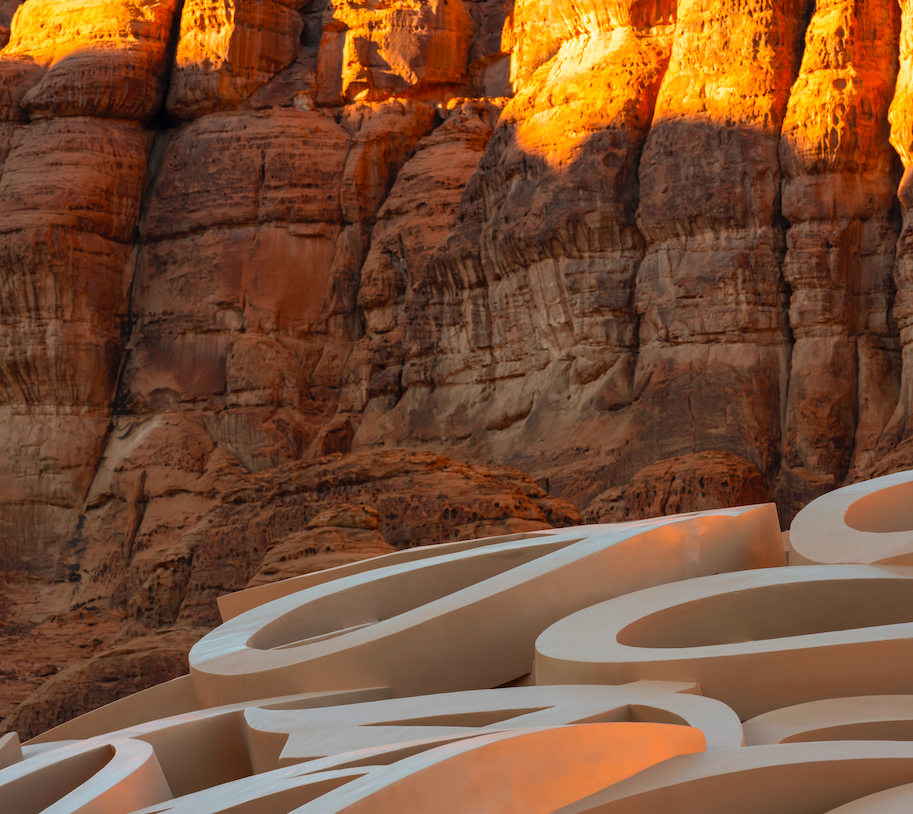
The city of Palm Springs has declined to sponsor art in this year’s edition of Desert X, the biennial that stages ambitious, free, open-air art installations across California’s Coachella Valley.
In a January meeting, the Palm Springs City Council initially authorized $30,000 in public art funds for Altanviro and Loper, an installation of six sculptures by artist Christopher Myers—but the deal fell apart after the city said it would only release the funds if it could work directly with the artist, rather than the biennial, due to concerns about last year’s Desert X AlUla in Saudi Arabia, a country known for its human rights violations. The city also sought to display the work for five years, long after the nine-week biennial runs its course.
“I would like to see Desert X… reform their ways and stop partnering with human rights abusers,” Palm Springs Mayor Christy Holstege told the Desert Sun.
Desert X declined the deal, which would have prevented the work from being shown under its name. Myers’s project will now go ahead as planned, along with several other biennial installations throughout the city—just without municipal funds.
The fallout stretches back to the 2020 edition of Desert X AlUla, which was backed in part by the Saudi government’s ministry of culture. Three biennial board members, including artist Ed Ruscha, resigned in protest of the Saudi government’s role in the murder of journalist Jamal Kashoggi, but organizers pushed forward anyway, hoping to create a cross-cultural dialogue with artists from the Middle East.
Steve Badgett and Chris Taylor, Terminal Lake Exploration Platform (TLEP), 2019. Courtesy of the artists. Photo by Lance Gerber.
“We believe deeply that art has the potential to challenge the divides that segregate our world and that engagement, no matter how difficult or controversial, will always be a better strategy than an isolationist approach rooted in selective moral grounds,” wrote founder and president Susan Davis, executive director Jenny Gil, artistic director Neville Wakefield, and curator César García-Alvarez in an opinion piece in the Sun.
“When we choose to boycott, divest, or sanction a country or region, we inevitably legitimize all other calls for that kind of approach elsewhere,” they continued.
Desert X’s local supporters—which include city council members from Indio and Palm Desert, which also host portions of the exhibition—have been vocal about what the free event has done for the community during its first two outings, and dismissive of the Palm Spring City Council’s criticisms.
“The same council that is attacking Desert X installed a male chauvinist Marilyn Monroe movie-prop ‘sculpture’ which diminishes women and sends a message to all the young girls that visit the museum that they are just reduced to sexual objects,” Gisela Colon, an artist who showed at Desert X AlUla, told Artnet News in an email. “Seems very hypocritical to me.”
Christopher Myers, Altanviro and Loper, rendering.
Myers’s artwork tells the fictional story of “two ranchers—one Mexican and one African-American—whose personal adversities and love for raising horses lead them to creating a welcoming commune in the place that would eventually become Palm Springs,” according to the artist’s statement. It will feature six five-foot-tall steel horse sculptures, each perched beneath a flowing textile flag, placed along East Tahquitz Canyon Way.
Meanwhile, another work planned for this year’s biennial has run into a roadblock from local officials. In December, the city of Coachella refused to grant permission or funding for a piece by artist Serge Attukwei Clottey. He is making one of his “Afrogallonism” sculptures, inspired by water shortages in his native Ghana, from the plastic jugs repurposed to carry water there. Council members felt the piece was exploiting the area’s own problems with tainted groundwater for tourism, and it will now be staged at another location.
The exhibition was originally slated to open on February 6, but has been indefinitely delayed until lockdown restrictions are lifted.